The Ministry of Defence is aiming to slash procurement timelines for major military platforms from six years to just two, as part of sweeping reforms under the Integrated Procurement Model.
Speaking to the Public Accounts Committee (PAC) this week, Andy Start, Acting National Armaments Director and CEO of Defence Equipment and Support (DE&S), set out ambitious plans to speed up the delivery of critical defence capabilities, emphasising the need to outpace adversaries and rapidly adapt to lessons from Ukraine.
“The threat to the nation has changed,” Start told MPs.
“The pace with which we were going about acquisition was no longer relevant to an environment in which our adversaries are developing new capability on the battlefield every day.”
As part of the reforms, Start explained that the MoD is moving away from rigid specifications handed down to industry, instead favouring “war-fighting concepts and problem statements” that give companies more freedom to propose innovative solutions from the outset.
“That drives much better value, because it allows you to get the 80/20 out of the acquisition,” he said, referring to getting initial operational capability quickly and iteratively improving systems over time.
Start said that the Integrated Procurement Model is already operational, highlighting its use on projects such as autonomous minehunting systems deployed to the Gulf, drone development under Project Tequila, and new land mobility initiatives. “Integrated Procurement Model is in place, is working, and is accelerating the pace,” he added.
The most significant changes, however, will come under the Strategic Defence Review and revised Defence Industrial Strategy. According to Start, the Chancellor has already announced a major segmentation of procurement into three tiers:
- Long-term strategic platforms (submarines, ships, aircraft) where the time to market is targeted to shrink from six years to two.
- Spiral development projects (enhancements to platforms) where the aim is to reduce time to market from three years to one.
- Rapid commercial exploitation, particularly learned from Ukraine, where new technologies are fielded within months.
“Breaking the budgets into three segments will allow us to transform the time to market from six years to two,” Start said, describing the goal as “challenging, but doable.” He emphasised that accelerating procurement would not only improve military effectiveness but also “really benefit industry and inward investment.”
Highlighting the success of rapid procurement for Ukraine, Start described the “3-2-1” process, a model where the MoD seeks three bids, trials two, and scales up the one that performs best – all within around three months. “That’s really powerful in terms of the effect it’s having on the battlefield, but it’s also transforming the relationship we’ve got with SMEs and the private equity and venture capitalists that support them,” he said.
Start concluded that the MoD’s rapid adaptation approach is “really exciting” and would be expanded further, reflecting a fundamental change in how British defence procurement operates.


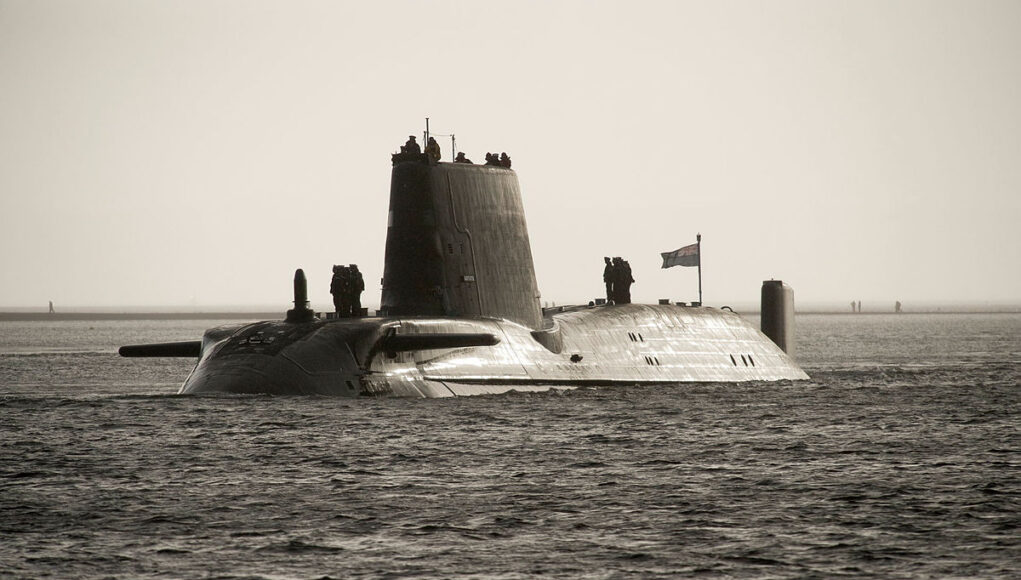
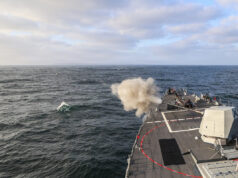
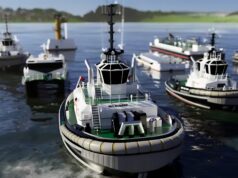
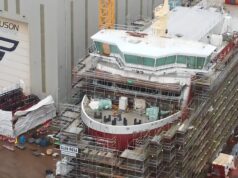
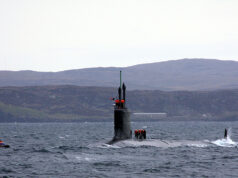
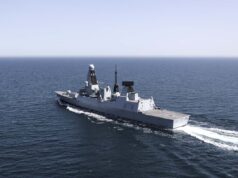

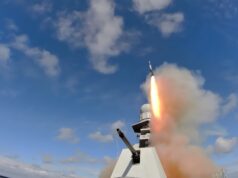
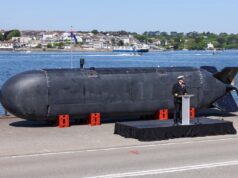

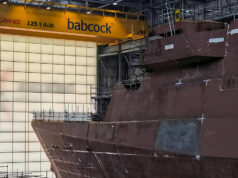

Hmme
Well the OFF SWITCH that was recently applied to the small investments such as heavy drones had the opposite effect. In this case industry stepped in but often companies move away from defence as it is an impenetrable mess and the ultimate margins can be very poor.
One thing that government never understands is the need for continuous investment in developing capabilities. Be that in tube tunnels, rail electrification, building motorways. It is much cheaper to do things like this at a steady pace with pipelines of work. That was staff can be retained on payroll and long term leases for kit with concomitant training can be undertaken.
I agree, we need a continuous drum beat of projects like warships, aircraft, armoured vehicles, roads and railways. Anything else we can’t have a continuous drum beat with such as AEW aircraft or MPA should be done as a simple off the shelf purchase from a foreign supplier.
The current government gets this but in five years they will be gone and the Tories will be back in and will cancel everything to save a few quid and pretend that competition and private enterprise can deliver everything.
It’s the voters fault at the end of the day.
If people keep listening to liars who promise they can deliver everything while lowering taxes via DOGE schemes or by picking on some group (single mothers, immigrants, Brussels etc etc) then this is what we get.
I do wish you would stop making party political broadcasts Jim. Blair/Brown cut as much as the Tories, if not more. The “increase to 2.5 per cent in 2027/28 is meaningless given inflation and the likely state of the economy by then. The last time a politician of any colour increased spending od defence was in the 80’s. Since the we have had nothing but cancellations, cuts, postponments,reuctions and sales.
A percentage increase in spending cannot be rendered meaningless by inflation, or the state of the economy for that matter.
How do you work that out? A pound now won’t be worth a pound in 2/3 years time. If the economic gdp reduces so will the value of 2.5 per cent of gdp. Simple arithmetic.
Everybody can earn 250$+ daily… You can earn from 10000-15000 a month or even more if you work as a full time job…It’s easy, just follow instructions on this page, read it carefully from start to finish… It’s a flexible job but a good earning opportunity..
go to this site home tab for more detail thank you…… 𝐖𝐖𝐖.𝐍𝐄𝐓𝐏𝐀𝐘𝟏.𝐂𝐎𝐌
I’m with Jim. After Wilson, on balance Labour’s track record better than Tories. Its political. Brexit and Tory mismanagement have reduced our capacity to fund defence and left us highly vulnerable just when we need to turn the tanker and fast.
Hi Geoff GDP is essentially inflation proofed as your expressing a % of your entire economy. It will rise atleast in line with inflation and if GDP falls typically prices will deflate as well.
I take your point about party politicking however I don’t believe it’s valid, the governments both Labour and Conservative before 2010 were cut from a different cloth. The Tory’s under Cameron and through Sunak were populists with little concern for the long term effect of their actions. Under Cameron the populist moves were for cuts with no care of long term affect and under Johnson it was splurging on debt with no long term care.
Labour went populist under Corbyn and thankfully pulled back. I’m hoping the Tory’s revert being a true centre right Conservative Party but at the moment it’s just more of the same populist lies we had under Truss, Johnson and Sunak.
However the current labour government which is very much not populist and not particularly popular will be removed from office in 2029 by a combination of liars promising more pensions, more NHS with lower taxes and less immigrants and no single mothers.
And Joe Bloggs will lap it all up for 5 minutes then go back to complaining about all politicians being liars after they vote.
what is really needed is, the removal from the process of those who have repeatedly wasted money on flu by night fantasy projects and the buying nod vastly overpriced kit from the mexican defence industry
Of course you are right with respect to the need for longer term relationships. The idea of fast one-and-done competitions does us no favours, and we’d be better off with early purchases and spiral development. However at least the move away from tight requirement specifications is a step in the right direction, as is the desire to deliver something at speed.
Too right about the requirements. With all due respect to serving officers they are not scientists, engineers (design and production) and or industrialists so letting them right detailed specifications, which is effectively designing the system causes all sorts of complications for industry. Of course, if you are talking about NATO / Def Standards for interoperability e.g. Link 16, then that is fair enough, but that should be the limit of any specification and should itself be a standardised list for most platforms…
There can be no more Global Combat Ship debacles, we need a bigger navy and it needs to be growing now… the same goes for the other services and getting the right kit to them in a timely manner will help with retention I am sure as well as costs.
Thing is if DE&S is going to reduce the time to market, does that mean it will need few people..? Should do. We’ll see.
Cheers CR
Precisely. Stop start, will we, won’t we? has a financial aspect that seemingly is invisible to the Treasury. One ‘bottleneck’ that showed up recently was the lack of skilled and experienced people in our ship yards. That expertise has a measurable value that is washed down the drain when the accountants shut industries, then having to re-start them decades later.
Wont hold my breath
Like the idea in concept it sort of reflects how Britain has often worked well in times of conflict when creativity and productivity completely differed from peacetime complacency and conservatism. Whether it can be made to work in peacetime even in this new time of threat/financial pressure is perhaps the biggest question. This Country too easily sinks back into a laboured administrative one dimensional mindset too easily despite the underlying genius waiting to be released.
I think 2 years from initial requirement to deployed platform is roughly what the Chinese manage, so clearly do-able.
Only if you ignore SOLAS, Lloyds Register etc plus all the survivability and shock to name a couple, what sort of standards are the Chinese ships built to and how much do the workers get paid?
Ian, 2 years for a large complex platform is impossible for us in the West.
I read that as time from requirement being identified to contract, not delivery.
Although I can see ‘market’ being interpreted as frontline… Confusing.
Even if they manage that it will be a big step forward. The new ship lifts for Faslane were identified in 2023 and they are still blah, blahing rather than going out to tender. Then there is the T32, the T83, Hawk T2 replacement, etc, etc..
Cheers CR
Time to market is a specific timeframe measure in procurement terms..it’s the time form your decision to procure to the time the product is delivered and working.., essentially the press release is a load of steaming poo because someone got the definitions confused.
Good luck building a nuclear submarine in two years.
PS did the Treasury agree? Most of the time wasting is from them.
I don’t think it’s 2 years to build.
More like 2 years from identifying the need to getting a contract/placing an order.
The press realease says time to market..which is the time from the point you decide to procure to the time your product is delivered and working.
I’m honestly not sure how you can have a time to market of 2 years for a complex warship… I suspect there is some miss understanding around language and what is being suggested.
In procurement terms time to market is the time from when you identify the need to procure to the actual capability coming on line…. This is clearly an impossible timeline for say a nuclear submarine or complex warship that can actually have time to market periods of multiple decades.
But they also said that the current “time to market” is 6 years, which also makes no sense under your definition.
I suspect it is the time between beginning a programme and deciding on a solution, ie the “market” in which contractors try to sell their wares.
As I said I think they have word confusion..but the definition of time to market is not mine it’s the standard understanding in procurement..essentially I suspect some policy advisor in the mod with no understanding of procurement made a press release, that spouts a load of rubbish.
So everyone here voted to pay higher taxes to support rapid procurement then?
I’d rather my taxes go towards that than paying for some lazy bugger on the dole to sit on his/her ass all day.
Be nice if all those warm words happen, I hope they do. The time takes get something from an idea to in service is in most cases 10 years for large vehicles etc, unless its an EOR.
i meant UOR,
The plan to cut procurement from six to two years has gone out to tender and may take up to six years to form a think tank to being the process…..
Perhaps we should do what the Ukrainians do …ASK the front line what do you NEED
And the soldier says I need a 375 caliber Desert Tech Revenge ($14,000) and ammo
I need a DJI mavric 3 drone
20 WILD HORNET FPV drones
Government or Fundraiser
ASAP
Ok I will get you it
Simple!!
If British soldiers were on the frontline now, they are FUBAR, and you cannot wait 2, 5, 10 years for equipment
If they can get it done in 2 years, it will make a huge difference… oops sorry I meant bloody miracle
Otherwise, as we all know, on here it’s just BS
Seeing is believing 👀
I have to be as sceptical as most of the commentators. There seems to be a ZERO chance of a major new defence project (i.e. value over £1 billion) going from start of the concept phase to a demonstration and manufacture contract award in less than two years, whilst still complying with the Defence and Security Public Contracts Regulations 2011 and the Procurement Act 2023. If the MOD and DE&S ever attempted this, the Treasury would just block it. It would need the direct intervention of the PM to then force the procurement through, but as a lawyer Starmer is far to risk adverse to cut through the red tape and potentially put his own head on the block if it then goes wrong (aka Westland, SA80, Bowman, Nimrod AEW, Nimrod MR4, Chinook, Warrior upgrade, Astute, Wedgetail, Ajax, …). And the answer isn’t to treat all defence procurements as an Urgent Capability Requirement, DE&S just doesn’t have the staff to do this and UCR contracts usually end up being awarded to the supplier that can deliver quickly – stifling competition and innovation, and often excluding small British companies in favour of multi-nationals with a “hot” production line.